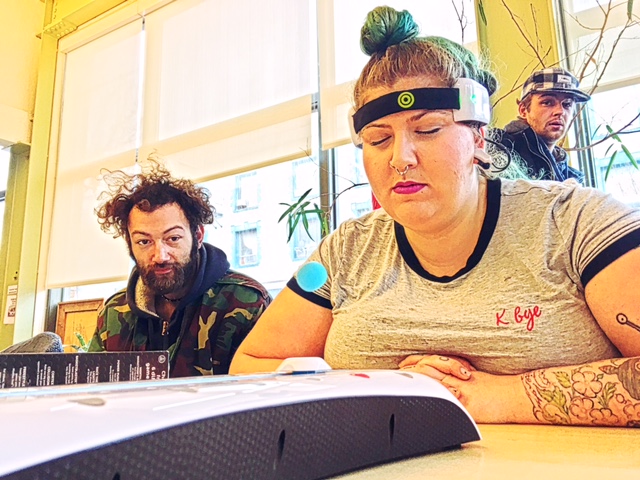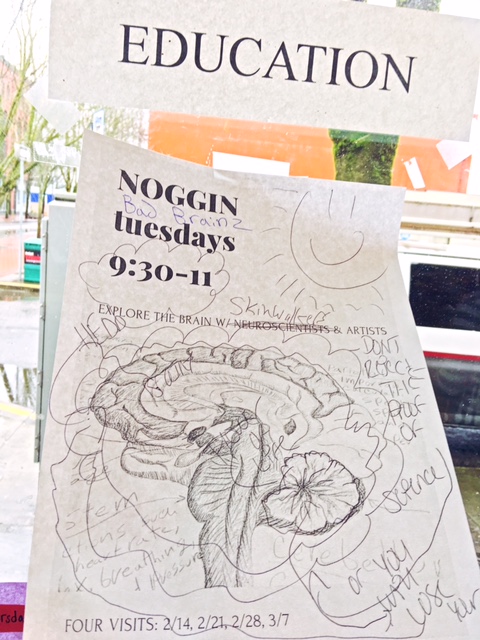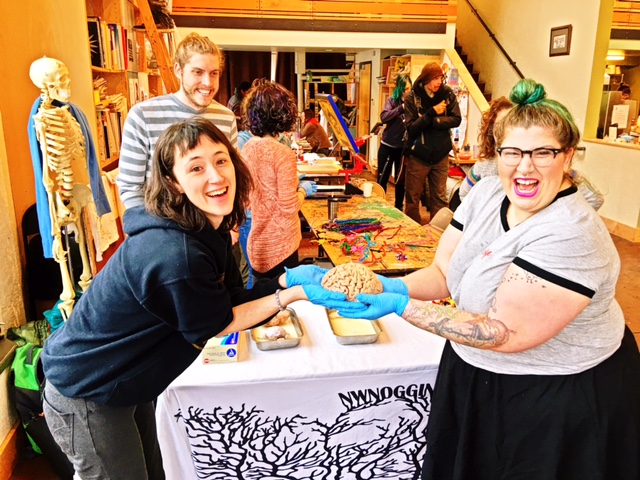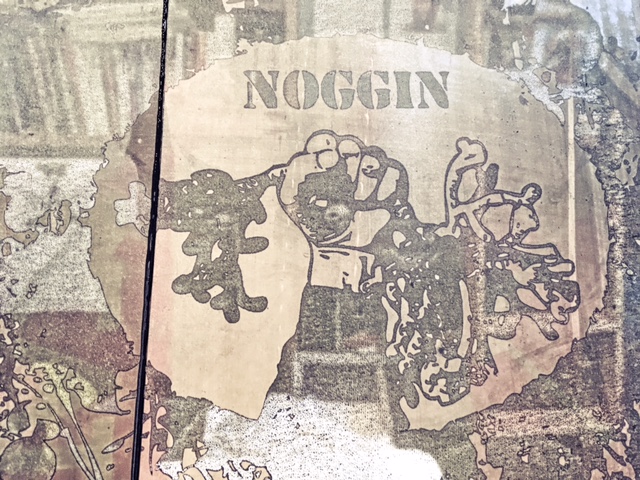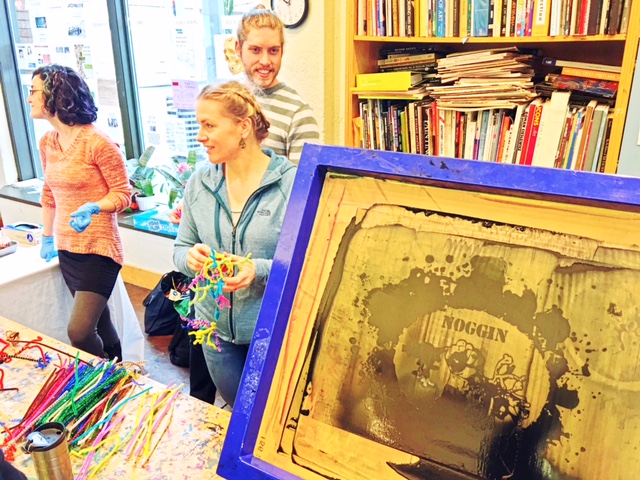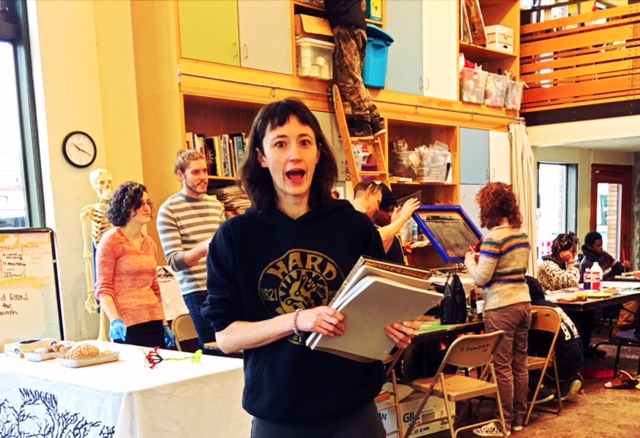We spent our last “Noggin Tuesday” (for this month anyway – we plan to return!) enjoying substantive, absorbing and engaging conversations with the exceptional young people at P:ear, an innovative program that builds positive relationships with homeless and transitional youth through education, art and recreation…
DO MORE: Donate to P:ear
While crafting neurons, examining brains, and playing electrophysiological games, we took questions on stress, visual scotomas, traumatic brain injuries, and a host of drugs, including opioids*, methamphetamine, alcohol, nicotine, hallucinogens and marijuana*…
LEARN MORE: Marijuana legalization means fewer opioid deaths
Added to the P:ear Noggin announcement: “Don’t reject the proof of science or you will lose your head”
Scott Jones, Brittany Alperin and Sam Carpenter from Behavioral Neuroscience at OHSU, and Jessica Patching-Bunch from Psychology at Portland State University, described their own research interests involving stress, anxiety, depression and adolescent brain development. There were several compelling conversations…
Sam Carpenter discussed ADHD, and got many questions, including “Could ADHD affect how one actually feels their environment? Could how you’re perceiving your environment contribute to ADHD?” From Sam: “I noted that some people with ADHD are so accustomed to having lots of input that they get almost uncomfortable when things ‘slow down.’ This could be part of the drive for movement/change/new stimuli. It might be a seeking behavior or yes, it might also be a consequence of how they perceive information.”
LEARN MORE: Time perception differences in children with and without ADHD
LEARN MORE: Colour perception in ADHD.
From Brittany: “One person came up to me and said ‘I think learning about the brain might help me fix the parts of my brain that are broken.’ We talked about how all animals have an inner core of their brain which is where most of our emotions like fear and anger come from, but the cortex enables us to exert some control. There are, I suggested, two basic ways people can regulate their emotions. One is suppression, which is basically stifling those emotions…”
LEARN MORE: Emotion regulation: affective, cognitive, and social consequences (Gross)
LEARN MORE: Are Expressive Suppression and Cognitive Reappraisal Associated with Stress-Related Symptoms?
“For example if you get scared, you might hide that you’re afraid, or tell yourself that you’re not feeling fear. You try and hide those emotions. The kid nodded a lot and said that’s what he usually does. I told him a lot of research has looked at this and the consensus is that this is not ultimately helpful; in fact, it often makes things worse. However, there’s another way you can regulate your emotions and this is called reappraisal…”
LEARN MORE: Neural Networks for Mindfulness and Emotion Suppression
“Reappraisal is when you try reframing the experience to be less emotional. For example if someone makes you mad you could think ‘they didn’t mean to make me mad’ or ‘it’s okay that I’m feeling angry right now, I’m going to walk away.’ Research has found that reappraisal is a much more effective way to regulate your emotions.”
LEARN MORE: Cognitive strategies to regulate emotions—current evidence and future directions
LEARN MORE: Relation between emotion regulation and mental health: a meta-analysis review.
“I mentioned that regulating your emotions is really tough and it’s okay if it’s hard at first. We also talked about how noticing your emotions is really important, particularly if you want to use reappraisal, and that that might be a good place to start. Start with noticing when you get really mad, or sad, or scared and try to understand what might be going on that’s making you feel that way. He seemed to really appreciate the advice…”
We also made our own screen-printed t-shirts!
From Jeff Leake: “We printed t-shirts with our logo and a new image with a fist and a neuron made for the March for Science. Screen printing is a stencil method of print making in which a design is imposed on a mesh screen with blank areas coated with an impermeable substance. For us this was a photo emulsion. Ink is forced into the mesh openings by a squeegee and on to the printing surface, in our case a t-shirt. This is also known as silk-screen, and serigraphy. In this method you need a separate screen for each color, our designs were only one color however several screens can be used to produce a multicolored image or design…”
Many thanks to Education Programs Coordinator Sarah Louise Allen, Arts Program Coordinator Will Kendall – and all the remarkable young people at P:ear…







